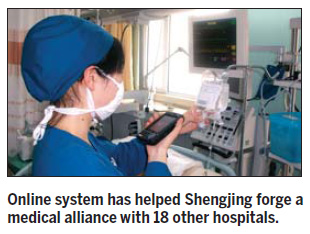Liaoning Special
Hospital alliance: A step toward healthcare reform
By Wu Yong and Liu Ce (China Daily)
Updated: 2010-12-03 07:57
 |
Large Medium Small |

Li Yongfu, a 50-year-old farmer in Xinmin of Liaoning province, was diagnosed a bone disease called osteoarthropathy two years ago.
He couldn't receive proper treatment because his hometown had limited medical services.
He was told that a well-known orthopedist at Shengjing Hospital, attached to China Medical University in Shenyang, might help relieve his suffering.
But just to start the cure was itself a battle - he would have to travel dozens of kilometers, register in person, and wait three or four days each time he saw the specialist.
His problem was solved by the Shengjing Medical Alliance, which offers pre-registration and consultation.
"I was treated by a medical expert from a top-level hospital and I didn't need to leave my home city to make the appointment. It was a great convenience," he says.
Jiang Bo, head of Xinmin People's Hospital, said "the alliance enables people to first register and make an appointment at our hospital - then they can go to Shengjing Hospital to receive treatment".
Shengjing started the alliance last year. It now includes 18 hospitals in Xinmin, Faku, Liaozhong, Zhuanghe and other smaller cities near Shenyang.
"The alliance has fully exploited the resource potential of our hospital," said Guo Qiyong, head of Shengjing Hospital. "It helps us provide much better medical services to people in other places in Liaoning province."
How medical resources are allocated is a heatedly discussed issue in China.
Authorities at all levels, as well as medical and health institutions, have been exploring measures to better distribute healthcare across widely different cities and regions.
Last April, China introduced a medical reform plan to encourage new approaches.
Ma Xiaowei, deputy minister of health, says the alliance provides one solution to the many challenges in sometimes inaccessible and expensive medical treatment.